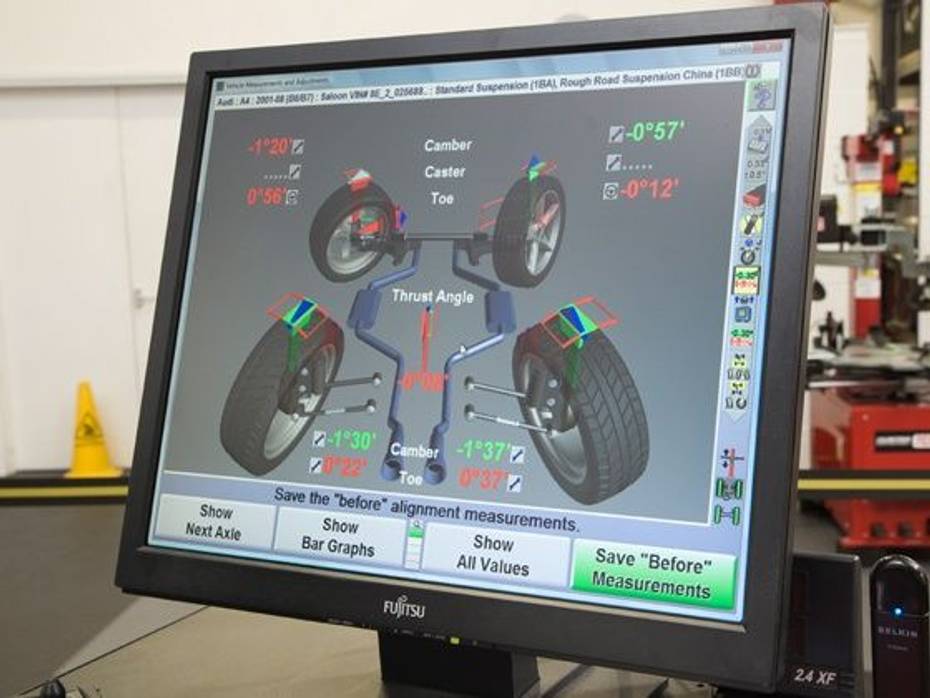
Renault Extends Standard Warranty On Kwid, Triber, And Kiger To 3...
- Dec 30, 2024
- Views : 30150


Castor angle is a steering adjustment that can be made for different steering settings in automobiles. The adjustment is done by setting the degree of the pivot points of the steering wheel to a positive or negative degree.
To understand castor angle, it is best to look at a steered wheel of a vehicle side on. Now, draw an imaginary axis through the steering axis of the wheel of the vehicle. If you tilt the imaginary axis towards the back of the car then you get a positive castor angle and if you tilt the imaginary axis to the front of the car then you get negative castor angle.
Positive castor improves directional stability and makes the car track straight and true when no steering input is given to the steering wheel. Ideally, a 10-degree positive castor is allowed on regular road cars. But positive castor reduces feedback from the steered wheels of a car to the steering wheel.
Racing cars are setup with negative castor to improve weight and feel of the steering and improve camber gain while cornering, however, this setting sacrifices on straight line stability of the steering input. Power steering is usually necessary to overcome the added heaviness of the steering wheel.

Renault Extends Standard Warranty On Kwid, Triber, And Kiger To 3...

Hyundai Exter: An Year Long Ownership Experience That Left Us Wanting...

Kia Syros Unveiled Globally As The Most Premium Sub-4m SUV In India

Is The Kia Syros More Compelling Than The Best-selling Hyundai Creta?

In Pictures: New Kia Syros Design And Interior Detailed

Hyundai Creta Electric REVEALED Ahead Of Auto Expo 2025! Here’s...

Upcoming Maruti Suzuki Cars Expected In 2025: e Vitara, Baleno...

Kia Syros vs Sonet: A Detailed Comparison Of The Two Sub-4m SUVs

Mahindra BE 6 Launched: Price For The Top-spec Variant Is Out!
India's largest automotive community
 Here Is An In-depth Picture Gallery Of 2025 Skoda Kodiaq Showcased At Auto Expo 2025
Here Is An In-depth Picture Gallery Of 2025 Skoda Kodiaq Showcased At Auto Expo 2025
 Tata Sierra: All Things You Would Want To Know About The Iconic Tata Four-Wheels Unveiled In The Auto Expo 2025
Tata Sierra: All Things You Would Want To Know About The Iconic Tata Four-Wheels Unveiled In The Auto Expo 2025
 Auto Expo 2025: Tata Sierra Vs Safari - We Compare Their Design In Detail
Auto Expo 2025: Tata Sierra Vs Safari - We Compare Their Design In Detail
 Auto Expo 2025: India's First Solar Car Vayve Eva Launched At Rs 3.25 Lakh
Auto Expo 2025: India's First Solar Car Vayve Eva Launched At Rs 3.25 Lakh
 BMW X3
Rs. 75.80 Lakh
BMW X3
Rs. 75.80 Lakh
 Hyundai Creta Electric
Rs. 17.99 Lakh
Hyundai Creta Electric
Rs. 17.99 Lakh
 Lotus Emira
Rs. 3.22 Crore
Lotus Emira
Rs. 3.22 Crore
 Lotus Emeya
Rs. 2.33 Crore
Lotus Emeya
Rs. 2.33 Crore
 Mercedes-Benz G-Class Electric
Rs. 3.00 Crore
Mercedes-Benz G-Class Electric
Rs. 3.00 Crore